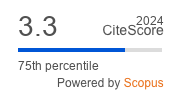Article | Open Access
Mobility-Related Economic Exclusion: Accessibility and Commuting Patterns in Industrial Zones in Turkey
| Views: | 4554 | | | Downloads: | 1995 |
Abstract: Geographers have long examined the assumption that women are locally constricted and what this means for women taking up of economic opportunities. These studies have provided valuable insights into the understanding of the spatial dimension of social exclusion. However, the investigation of the role of wider economic, physical and social contexts on women’s mobility and accessibility constraints has mainly concerned the countries in North America and Western Europe. Through a mixed methods study of two industrial zones in Turkey, this article looks at how women and men from different social backgrounds access the zones with the aim of identifying the specific constraints that women face in their everyday life in accessing economic opportunities. The results show that while gender seems to play a role in the choice of place of residence and the employers’ perception of time use, women’s socioeconomic and educational backgrounds seem to be more important predictors of their commuting patterns and access to the zones. The study confirms that gendered daily travel patterns are a useful unit of analysis for investigating unequal access to economic opportunities. It further argues that the complex nature of everyday mobilities of women should be interpreted in conjunction with the perceptions of employers on women’s work spaces and time use.
Keywords: accessibility; commuting; female labour; industrial zones; labour markets; mobility; Turkey
Published:
© Nihan Akyelken. This is an open access article distributed under the terms of the Creative Commons Attribution 4.0 license (http://creativecommons.org/licenses/by/4.0), which permits any use, distribution, and reproduction of the work without further permission provided the original author(s) and source are credited.


